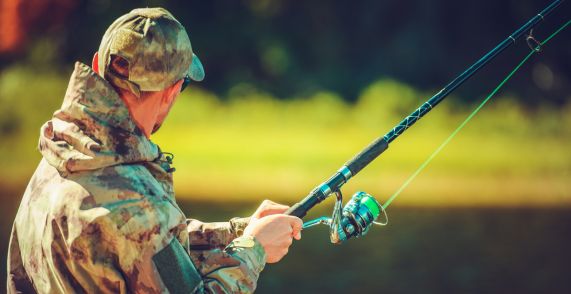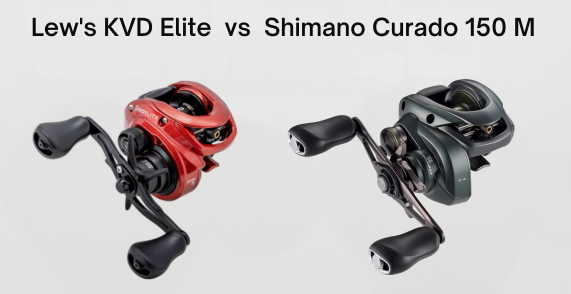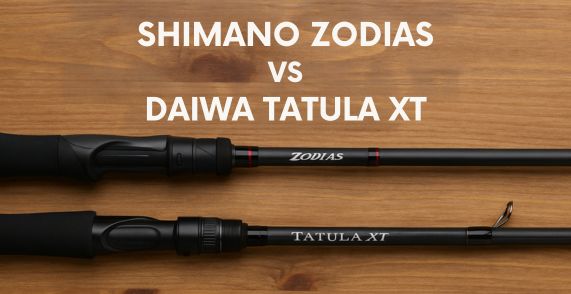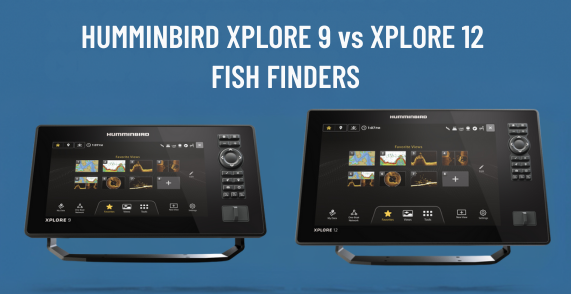Imagine: you’re up at the crack of dawn, your fishing gear in tow. You’ve hiked to your favorite secluded spot where the trout always seem to be bountiful. The morning mist mingles with the earthy smell of freshwater – a perfect day for fishing!
Yet, hour after immobile hour, not a single tug jolts your rod. Frustrating as it might seem, the river hasn’t turned against you; instead, the unnoticed mistakes you’re making could be discouraging the trout from taking your bait.
Like a detective examining clues or an actor putting on just the right costume to perfectly embody a character, you need to understand and respond to various subtle indicators and needs unique to trout.
So we’ve assembled 7 possible reasons why those crafty creatures aren’t biting – and solutions to turn your angling luck around.
There are many factors that can contribute to a lack of trout bites, including using the wrong bait or lure, fishing at the wrong time of day, fishing at the wrong location, being too loud or visible while fishing, and even weather conditions.
In This Post
1. Conditions

Trout fishing goes beyond just throwing a line into the water and waiting for something to bite.
Trout live in their own unique world, and understanding what they do under certain conditions is vital before even heading out to fish. Their behavior changes depending on various conditions, including weather, lighting, and water temperatures.
For instance, heavy rainfall can cause a change in water temperatures that may make the trout uncomfortable or disoriented. Very low temperatures could signal a decrease in trout activity as they start to conserve energy due to lower metabolism.
Understanding how the surrounding environment influences the fish’s temperament is an important aspect of any angler’s preparation.
I once went fishing with a friend during the summer months when conditions were generally bright and sunny. We set up at our favorite spot but had trouble getting a bite for a while.
It wasn’t until we noticed a storm brewing far away on the horizon that we knew it was time to change tactics. Sure enough, we finally got a catch after switching up our lures and wading closer to shore.
Think of it this way; if you’re not comfortable, then neither are the trout you intend to catch.
They require specific environmental conditions for optimal feeding and activity levels. Failure to account for these conditions often results in losing out on bites or chasing away potential catches – quite like going about your day without an umbrella during a downpour!
Understanding how different conditions impact trout behavior is one thing, but knowing how water and weather affect their habitat provides an added advantage in catching more fish.
2. Water and Weather

Water temperature plays a critical role in trout survival and spawning patterns. The ideal temperature range for catchable trout usually ranges from 55-68 °F (12-20°C).
These temperature ranges influence the metabolic rates of the trout, and as a result, determine their feeding behavior.
Water clarity is also a significant factor that affects trout behavior. Water with high turbidity usually offers a green signal to predators, making the fish more wary and less aggressive in taking bait.
Clear water, on the other hand, allows trout to see both prey and predators from a distance, making them more susceptible to striking at the proper presentation.
Then there’s wind and other weather conditions to consider. Often anglers view windy weather as undesirable for fishing, primarily because it creates ripples on the surface that can reduce visibility.
However, during periods of light winds or a slight breeze, fish tend to come closer to the surface to feed – making it an excellent time to cast lures at shallow water depths.
At times when fishing higher elevation rivers and streams, temperatures can be much colder than anticipated due to the surrounding geography.
During these weather conditions, it’s best to wear thermals, warm socks, and gloves for sufficient insulation. To offset low activity levels from cold-water temperatures, opt for attractor patterns and heavily weighted flies when nymphing.
These are just some of the essential environmental factors anglers must consider before heading out on a fishing trip if they hope to maximize their chances of catching trout.
3. Lighting

Lighting plays a pivotal role in fishing as it impacts trout’s feeding patterns and their behavior.
Trout are known to be highly sensitive to light, and they can identify the difference between natural light and artificial light. The right lighting conditions can make all the difference.
In clear water, trout can see anglers standing on the riverbed due to their shadow cast over the water surface. Try to avoid casting shadows onto the water by positioning yourself correctly and being mindful of the sun’s position.
Low-light conditions such as early morning or evening or even an overcast day can provide a perfect setting for fishing.
These conditions make it difficult for trout to see fishing lines, making it easier to catch them. On bright sunny days, it’s best to fish in deeper water or areas with more cover that reduce the amount of light reaching the water.
Some anglers argue that fly-fishing is more productive during darker hours than other techniques.
Others believe that using bait when there is enough light can be equally successful. Many successful anglers emphasize being aware of the river and how lighting changes affect its surroundings and his/her baits’ visibility.
4. Trout Behavioral Patterns

Trout behavior is not random; it responds predictably to various factors, such as changing temperatures, food availability, and sunlight exposure. Understanding these behavioral patterns improves your chances of success when targeting trout.
During summer months when it’s warm, many anglers fish for trout during early mornings or late evenings. During this time, trout alter their feeding pattern to adapt to low-light conditions, making it easier for anglers to target them.
While some may argue that this predictive behavior isn’t accurate, it’s essential to understand these behavioral patterns as fish always act in specific ways. Eventually, the circumstances you face are what determine the predictions accuracy.
It’s similar to studying the flow of a river or any other body of water before fishing. Understanding its current conditions such as correct depth, water-speed, and underwater flow increase your chances of catching more fish.
Utilizing effective baits and techniques involves both skillset knowledge and understanding how specific factors impact trout’s feeding habits.
5. Utilizing Effective Baits and Techniques

Fishing for trout requires understanding of what they eat and how they respond to different bait and techniques.
One of the common reasons why anglers may not be able to catch trout is because they are using the wrong bait or technique. There are several usual types of baits that many anglers use such as worms, insects, and small fish.
Experienced anglers would advise experimenting with different baits because there is no “one-size-fits-all” option.
Trout tend to strike lures that mimic prey found in their habitat. They are more likely to hit a lure that mimics natural food sources like insects and baitfish.
For example, if you notice a hatch of specific insects on the water surface, then using a fly that mimics the insect can lead to success. The key is to understand what kind of insects or prey are present in the water system where you are fishing, and choosing a suitable bait accordingly.
It’s like walking into a massive department store with many products but selecting only a few options based on your needs and preferences. Choosing the right bait when fishing for trout depends on observing the environment and making logical decisions.
Another effective technique is drifting which is when you drop your bait in the water upstream and let it float downstream while keeping an eye on your line for any movements indicating a bite.
This technique mimics a natural food source floating towards the fish.
6. Choosing The Right Season

Trout respond differently depending on seasonal changes. Knowing these seasonal patterns allows for effective planning and better results when out fishing.
Knowing about the season and its changes can help anglers predict where the trout’s location could be. For example, during the fall season, when water temperatures begin to drop, Trout start shifting from shallow pools to deeper areas.
During spring, trout are often hungry after remaining dormant during winter months. They become more active and are likely to feed more frequently.
During summer months, fish may seek colder water in deeper parts of the river or stream, while fall triggers spawning season when fish’s diet changes to smaller creatures like insects.
In summer, anglers should consider fishing at dawn, dusk, or even nighttime when the temperature is cooler and trout may be more active.
Another example is fishing in the fall where trout move upstream for spawning. Following the direction of their movement can lead one to find a massive shoal of fish.
However, seasonal changes are not uniform across all regions; different fisheries have different timelines. Researchers around the world report on the spot findings. It’s often a good idea to reference this material while planning trips in new regions.
Anticipating trout response to seasons is similar to getting specifications before installing software updates on a device. As you’d like to know what’s new or improved before updating your device so knowing how fish respond during specific seasons will give one an idea of how to plan and prepare better for fishing success.
7. Being Where The Fish Are

When it comes to trout fishing, location is everything. Even the most experienced anglers can struggle if they aren’t fishing in the right place.
While some may believe that all waterways are created equal, that simply isn’t true. Certain bodies of water are known to be better for trout fishing than others, and there are specific things you should be looking for when choosing a location.
One key factor when it comes to location is the temperature of the water.
Trout prefer colder waters, so it’s important to find streams or rivers where the water temperature stays below 65 degrees Fahrenheit.
This can vary by region and time of year, as some trout species prefer different temperature ranges. However, as a general rule, colder waters tend to have more active fish.
In addition to temperature, the speed and depth of the water can play a huge role in your success.
Trout like to hang out in areas where there is plenty of oxygenated water flowing through, which typically means riffles and runs. These faster-moving currents help keep the water oxygenated and provide an ideal environment for trout.
Some anglers may assume that deeper water is always better for catching trout.
While it’s true that trout like to have access to deeper pools during hot weather or bright sunlight conditions, they typically don’t spend their entire day at the bottom of a deep pool. Instead, they prefer shallower areas where they can easily move up to feed on insects and other prey.
Choosing the right location is a bit like finding a good neighborhood to live in – you want one that has all of the amenities you need while also being safe and comfortable.
When searching for trout-friendly locations, look for areas with plenty of cover such as overhanging trees or undercut banks, as these provide shade and shelter for the fish.
Ultimately, the key to finding good trout fishing locations is to do your research and pay attention to the details.
Talk to other anglers in your area, read local fishing reports, and spend time exploring different bodies of water. With a bit of practice and some patience, you’ll soon be able to identify the best spots to catch trout in your region.
- A 2017 study revealed that trout have sharp color vision and are more likely to be attracted to lures that resemble their natural prey, showing the importance of color and pattern in successful fishing.
- According to scientific research, weather conditions can impact fish behavior significantly; for instance, cold fronts can make trout less willing to bite.
- Findings from a 2020 study on diurnal and nocturnal behaviors of trout indicate that time of day plays a crucial role in fishing success. The study showed a significant increase in feeding activity during low light hours (early morning and late afternoon).







